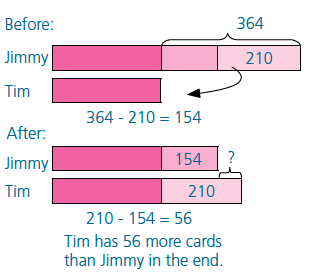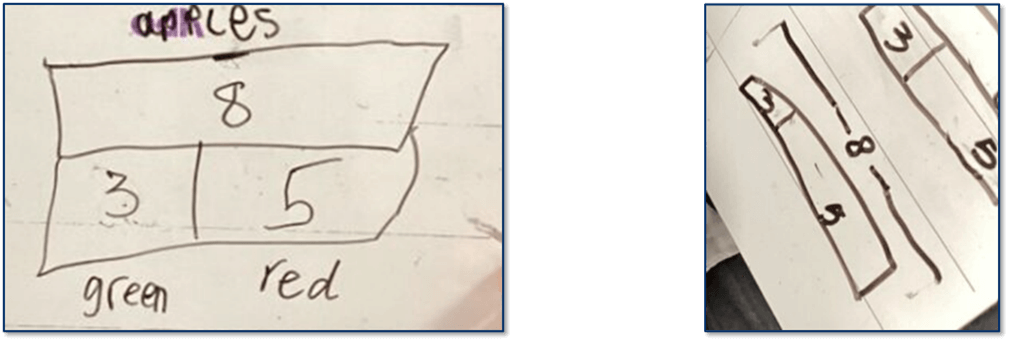Why educators trust bar model drawing techniques for teaching math
Wiki Article
Exploring Bar Design Drawing Techniques: A Comprehensive Guide to Imagining Mathematics Concepts
Bar design drawing techniques work as an important source for both teachers and students in envisioning mathematical principles. These models streamline complicated mathematical partnerships, helping in the understanding of enhancement, multiplication, division, and subtraction. This guide outlines efficient strategies for applying bar versions, promoting active interaction and real-world connections. As visitors check out the sensible applications and teaching ideas, they will reveal just how these strategies can change their approach to mathematics.Understanding the Fundamentals of Bar Design Illustration
Bar version attracting serves as an effective visual tool in mathematics, helping with the understanding of numerical relationships and analytical strategies. This method includes standing for numbers and their relationships through rectangular bars, making it less complicated to picture procedures such as addition, reproduction, division, and subtraction. Each bar's size matches to a specific value, allowing students to contrast amounts and understand proportions plainly.To produce a bar model, one starts by determining the issue's crucial elements, often breaking it down into parts that can be visually represented. For example, in a straightforward enhancement trouble, two bars can be attracted, with their lengths standing for the addends. The consolidated length illustrates the sum. Furthermore, bar designs can be adapted for much more complicated troubles, consisting of fractions and proportions, by changing benches as necessary. Understanding these fundamentals lays a solid foundation for reliable analytic and much deeper mathematical comprehension.
Advantages of Utilizing Bar Designs in Math
Using bar designs in mathematics offers many benefits that improve understanding and comprehension. These aesthetic depictions help students in grasping complicated principles by damaging them down right into workable elements. Bar models supply a clear framework for illustrating partnerships in between numbers, making abstract ideas extra concrete. They promote a deeper understanding of mathematical operations and facilitate analytical by enabling learners to visualize the data they are collaborating with.Moreover, bar models support the advancement of essential thinking abilities, as students need to evaluate and translate the visual information to reason. This technique urges active engagement with the material, reinforcing retention and mastery of mathematical principles. By promoting a strong structure in visual literacy, bar designs empower learners to approach numerous mathematical challenges with self-confidence. In general, the integration of bar models right into maths education confirms helpful in cultivating both understanding and logical abilities among pupils.
Using Bar Versions to Enhancement and Subtraction
Bar designs act as an effective tool for visually standing for addition and subtraction troubles. By highlighting the connection between numbers, they enhance understanding and help with problem-solving. In addition, real-life applications of these models can aid students realize mathematical ideas in sensible contexts.Standing For Addition Aesthetically
Aesthetic help can substantially enhance their understanding of these operations when trainees come across enhancement and reduction troubles. Bar designs function as reliable tools for representing enhancement. By splitting a rectangle right into sectors that match to the numbers entailed, trainees can envision the relationship in between the amounts. For instance, if a pupil needs to add 3 and 5, they can create a bar divided into 2 areas: one section representing 3 and the other representing 5. This clear depiction not only streamlines the addition procedure however also strengthens the concept of incorporating quantities. As students control these visual help, they develop a deeper comprehension of enhancement, leading to improved analytical abilities and greater self-confidence in their mathematical capacities.
Reduction With Bar Designs
Although subtraction is typically perceived as a more intricate operation than addition, bar versions can effectively clarify this process for trainees. By aesthetically representing the amounts included, pupils can better understand just how numbers relate to each other. In a bar model for subtraction, one bar represents the overall, while an additional shows the amount being deducted. This visual difference assists students understand the principle of "removing." If a bar shows 10 systems, and another bar standing for 4 devices is eliminated, trainees can quickly see that 6 units remain. This strategy not only fosters understanding of reduction however likewise help in developing analytical abilities, enabling pupils to picture their mathematical reasoning and enhance their total comprehension of mathematical concepts.Real-Life Application Instances
Recognizing subtraction with bar versions lays a foundation for using these techniques in real-life circumstances. In different contexts, such as budgeting or shopping, people can imagine just how much cash stays after expenses. If a person has $50 and invests $20, a bar model can represent the total amount and the spent section, illustrating that $30 is left. Furthermore, moms and dads can make use of bar models to aid youngsters understand exactly how several more items need to be contributed to finish a collection, such as having 3 apples and requiring five. This graph simplifies intricate issues, helping with comprehension and retention. Ultimately, bar designs act as efficient tools in day-to-day decision-making, improving mathematical understanding in useful situations.Envisioning Multiplication and Department With Bar Versions
In discovering the application of bar models for multiplication and department, it is vital to comprehend their fundamental concepts. Creating reproduction models enables learners to imagine connections in between numbers, while efficient department methods can be shown through these visual aids. This method improves understanding and problem-solving abilities in mathematics.Comprehending Bar Versions
Bar designs act as a powerful visual device for showing the principles of multiplication and department. They enable students to represent mathematical relationships in a structured format, promoting a much deeper understanding of these operations. In reproduction, bar designs show teams of equivalent size, permitting people to visualize the total amount when incorporating these groups. Alternatively, in division, bar designs help portray just how a total amount is separated right into smaller, equal parts, making clear the concept of dividing. By employing these visual aids, pupils can grasp the underlying concepts of multiplication and department extra efficiently. This method not only boosts comprehension but additionally sustains analytical abilities, making bar designs an indispensable possession in mathematical education and learning.Constructing Multiplication Designs
Creating multiplication versions making use of bar representations uses a clear method for picturing the procedure of multiplication. These versions allow students to stand for reproduction as teams of equivalent parts, making abstract ideas much more concrete. To show (3 times 4), a trainee can attract one bar divided right into three equivalent sections, each representing four units. Furthermore, creating a 2nd bar with the same length enhances the understanding of repeated enhancement, as each sector represents one group. This visual representation not just aids in understanding multiplication but also enhances problem-solving skills. By utilizing bar versions, pupils can much better comprehend relationships in between numbers and establish a robust structure for a lot more complex mathematical principles, causing enhanced self-confidence in their capabilities.Imagining Division Strategies

Addressing Word Problems Utilizing Bar Design Techniques

In an issue entailing addition and reduction, pupils can draw separate bars for each quantity and after that adjust them to discover the option. This procedure not just clears up the trouble but also fosters a deeper theoretical understanding. Bar versions can be adjusted for various types of word issues, making them functional throughout different mathematical subjects. Eventually, using bar versions can substantially enhance students' analytical skills by providing a clear aesthetic path to get to the appropriate solution.
Integrating Bar Versions in Different Math Topics
Bar versions can be perfectly incorporated right into numerous math topics, boosting students' understanding of ideas beyond standard arithmetic. In algebra, these visual devices help in representing formulas and inequalities, making it possible for learners to picture connections in between variables. When taking on geometry, bar designs can illustrate the buildings of shapes and spatial thinking, aiding trainees understand concepts like location and boundary effectively. In stats, bar versions help with the analysis of data collections, enabling students to compare amounts and identify fads aesthetically. In addition, integrating bar versions within dimension subjects aids in understanding devices and conversions by giving a substantial representation of amounts. By utilizing bar versions throughout various mathematical locations, educators can cultivate a deeper comprehension of complicated ideas, therefore boosting problem-solving skills and promoting essential thinking (bar model drawing techniques). This adaptability shows the utility of bar versions as a fundamental tool for pupils in their mathematical journeyTips for Training Bar Models Effectively
Incorporating bar designs right into teaching practices calls for thoughtful techniques to maximize their effectiveness. Educators should begin by introducing bar models with simple, relatable examples that students can easily understand. This assists to develop self-confidence and knowledge with the principle. Progressively boosting the complexity of problems allows students to use their abilities gradually. In addition, teachers should encourage pupils to create their own bar designs, promoting energetic engagement and possession of their learning.Incorporating collaborative tasks can likewise boost understanding, as trainees talk about and resolve problems in groups. Continuous responses is important; educators ought to offer useful discourse on trainees' bar version representations to assist renovation. Lastly, attaching bar versions to real-life scenarios reinforces their significance, helping students see the functional applications of their mathematical skills. By executing these strategies, teachers can effectively harness the power of bar designs in their mathematics direction.
Regularly Asked Inquiries
Can Prevent Versions Be Used in Various Other Subjects Besides Mathematics?
Bar versions can without a doubt be utilized in different topics past math. They properly highlight concepts in scientific research, social studies, and language arts, aiding to visually stand for connections, procedures, and concepts for boosted understanding across self-controls.What Age Is Best Matched for Knowing Bar Models?
Bar designs are best fit for children ages 7 to 12, as they develop concrete reasoning skills during this duration (bar model drawing techniques). At this age, pupils can successfully comprehend abstract principles through visual representation and analytic strategiesAre There Digital Tools for Creating Bar Versions?

How Can I Analyze Pupil Recognizing of Bar Models?
Examining pupil understanding of bar designs can involve quizzes, observational assessments, and team conversations. Educators might likewise assess trainees' finished designs and their capability to clarify their reasoning, ensuring an extensive analysis of understanding.What Are Common Blunders When Using Bar Designs?
Usual blunders when making use of bar designs include misrepresenting quantities, stopping working to accurately identify bars, puzzling addition and reduction, ignoring to make use of consistent ranges, get more info and forgeting the value of clear visual separation in between different components.In addition, bar versions can be adjusted for much more intricate troubles, including proportions and fractions, by readjusting the bars accordingly. Subtraction is typically regarded as an extra complicated procedure than enhancement, bar versions can efficiently clarify this process for pupils. In a bar model for subtraction, one bar represents the total amount, while an additional suggests the amount being deducted. If a bar reveals 10 devices, and another bar representing 4 systems is eliminated, trainees can conveniently see that 6 systems remain. When dividing a total into equal teams, students can draw a long bar to represent the whole and after that sector it right into smaller sized bars that show each team.
Report this wiki page